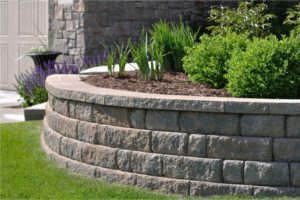3 Common Materials for Your Retaining Walls
 Retaining walls are unique lawn care and landscaping features for Huntsville homeowners who have property with slopes of varying heights. Retaining walls are used to contain a horizontal load of soil, and although the horizontal pressure of soil is less than its vertical load, the building material of your retaining walls must be durable.
Retaining walls are unique lawn care and landscaping features for Huntsville homeowners who have property with slopes of varying heights. Retaining walls are used to contain a horizontal load of soil, and although the horizontal pressure of soil is less than its vertical load, the building material of your retaining walls must be durable.
Boulders
Boulders have been used for retaining walls for far longer than other materials, and they produce a quaint, rustic impression. Boulders are easily accessible and do not require further refining. They are extremely long-lasting and easy to assemble, but they cannot be built very high. Additionally, controlling water flow is difficult with boulder retaining walls, and boulders take up a lot of space in small yards.
Wood
If you want to attend to your lawn care and landscaping with a sense of warmth and to keep your yard as natural as possible, then wood retaining walls may be right for you. They are versatile, easy to build, affordable, and lightweight. However, they may rot, and they will not withstand extreme weather as well as other materials. Homeowners should keep wood retaining walls under four feet in height. With sufficient maintenance, wood retaining walls can last up to 20 years, but they do not perform well in humid, rainy climates.
Brick
For homeowners who want a natural look without the risk of rot, brick is an excellent option. Brick retaining walls are durable, resistant to fire and water, and eco-friendly, and they require minimal maintenance. However, creating a brick retaining wall is laborious for your lawn care and landscaping contractor, and brick is more expensive than other building materials.













